#hong kong apps developer
Explore tagged Tumblr posts
Text
Spark Tech: Your Premier App Development Company in Hong Kong

Are you looking for top-tier app development company in Hong Kong? Spark Tech is your ultimate destination! We specialize in creating innovative and user-friendly mobile applications tailored to meet your unique business needs. Whether you're seeking iOS, Android, or cross-platform solutions, our team of experts is ready to turn your ideas into reality. Contact us today for a consultation and let's ignite success together with Spark Tech!
0 notes
Text
This day in history

#20yrsago Asimov’s magazine on ebooks https://web.archive.org/web/20041010190341/https://www.asimovs.com/_issue_0408/onthenet2.shtml
#20yrsago Can suing customers save the record companies? https://web.archive.org/web/20041012170814/http://www.law.com/jsp/article.jsp?id=1095434496352
#20yrsago ACLU and EFF strike down part of PATRIOT Act https://web.archive.org/web/20040927082258/https://www.eff.org/news/archives/2004_09.php#001945
#20yrsago Industrial nations to WIPO: less IP, more global well-being https://web.archive.org/web/20041011201242/http://lists.essential.org/pipermail/ip-health/2004-September/006974.html
#15yrsago BBC wants to encrypt “free” TV — talking points debunked https://www.theguardian.com/technology/2009/sep/29/bbc-hd-encryption
#15yrsago UK Border Agency’s pseudoscientific “race-detection” DNA/isotope tests has scientific experts “horrified” https://web.archive.org/web/20091004013349/http://blogs.sciencemag.org/scienceinsider/2009/09/nationality-tes-1.html
#15yrsago Zork rock anthem https://web.archive.org/web/20131110083129/http://www.elumir.com/music/Walkthrough.mp3
#15yrsago Apple 1984 ad, updated for 2009 https://www.youtube.com/watch?v=tdVzboF2E2Q
#15yrsago Android developers pledge to make open equivalents to Google’s proprietary apps https://arstechnica.com/information-technology/2009/09/android-community-aims-to-replace-googles-proprietary-bits/
#15yrsago Boneshaker: Cherie Priest’s swashbuckling steampunk Seattle story https://memex.craphound.com/2009/09/29/boneshaker-cherie-priests-swashbuckling-steampunk-seattle-story/
#15yrsago Faced with network surveillance, Hong Kong student demonstrators go P2P https://www.bbc.com/news/blogs-trending-29411159
#10yrsago Eric Holder’s terrible tech-liberties record https://www.newyorker.com/news/daily-comment/holders-disappointing-tech-legacy
#10yrsago Localizing an operating system for a language with no high-tech vocabulary https://web.archive.org/web/20191025222806/https://www.economist.com/international/2014/09/27/cookies-caches-and-cows
#5yrsago Stealing Ur Feelings: interactive documentary on the snakeoil “science” of facial emotion detection https://stealingurfeelin.gs
#5yrsago Jonathan Lethem on Edward Snowden’s “Permanent Record” https://www.nybooks.com/articles/2019/10/24/edward-snowden-labyrinth/
#1yrago The surveillance advertising to financial fraud pipeline https://pluralistic.net/2023/09/29/ban-surveillance-ads/#sucker-funnel

Tor Books as just published two new, free LITTLE BROTHER stories: VIGILANT, about creepy surveillance in distance education; and SPILL, about oil pipelines and indigenous landback.

12 notes
·
View notes
Text
Mini World: CREATA (2018)



Date: Apr 28, 2018 Platform: Android / PC Publisher: MINOVATE HONG KONG LIMITED Developer: MINOVATE HONG KONG LIMITED Genre: Massively Multiplayer Theme: Adventure / Casual Type: Appropriation
Summary:
Mini World is a 3D free sandbox game about adventure, exploration, and creating your dream worlds. There is no grinding or leveling up. No IAP gate that locks features from free to play players. Everyone can enjoy the game’s full features with great freedom
Source: https://www.miniworldgame.com/
Link: https://store.steampowered.com/app/814480/Mini_World_CREATA/
#Mini World: CREATA#jttw media#jttw game#video game#game#appropriation#sun wukong cameo#skin#sun wukong
8 notes
·
View notes
Text
I'm reading LotM for a second time, and am currently in the beginning of arc 2 ~
I'm enjoying it WAY MORE currently!! I think one of LotM's weaknesses as a story is that the author gives us way too much information in the first arc. There's so many names of people and titles of stuff! I was so confused the first time around!! I had finished the story with lots of information holes related to lore. It was like having a puzzle that's 3/4ths finished, with 1/4th of it being loose puzzle pieces. (I loved reading it nevertheless). Rereading LotM, however, is like finally placing those remaining pieces together 💛 (or at least most of them). Info like the Nation of Evernight have become a lot more clear to me now.
So I'm enjoying it so much more. It's so exciting when you know what will generally happen!! I'm like "THE FIRST MENTION OF INCY BOY AND 0-08!!- OH THERE'S AZIK!!! *sends Azik a hug*- OH THERE'S LENAVUS. I hate Mr. Lenavus, all my homies hate Lenavus.- OH THERE'S TRISSY!!!!!!- " etc etc. And oh gosh the Tarot Club!! I love seeing the Club's development again.
I'm also remembering bits of how I used to feel about certain characters. I haven't realized until now how great Frye is. I hadn't paid much attention to him during the first time. Now, I just wish he was more of a major character in the story. Meanwhile, I remember I thought that Leonard was an antagonist and would become Klein's enemy in the future. I was so wrong 😂 But I understand why I thought that. Klein and Leonard are passive aggressive and suspicious of each other in the beginning lol
Every time the story shows Melissa, Benson and Klein planning for the future, like going to Desi Bay and famous restaurants after they save up, I feel so sympathetic...
The scene of Old Neil's death did not fail to make me cry again... And with Dunn Smith...
Things are more clear and I'm so happy that I decided to read it. I wish there were physical copies in north America. (Btw I love Hong Kong's LotM cover art so much ❤️ If LotM is published in America, I hope the art is similar!)
When I read LotM for the first time, I had taken notes on the story and my thoughts and feelings in a notepad app I have. So, while I'm rereading, I'm also reading the notes I had made previously, and it's been fun to compare 😂 I will continue on!! Meanwhile, I'm slowly keeping up with CoI <3 there's so much chaos happening there... I'm taking notes on it as well. Maybe I'll reread CoI someday too!!
(I've been thinking.... I feel like Circle of Inevitability kind of... misses certain feelings I get from reading LotM 1. Seeing Klein learn how to set up rituals, him finding intricate ways to keep items on him and do certain things like visiting Sefirah Castle, we don't see those details barely in CoI. Klein had to carefully choose what to keep with him, because sometimes he didn't have time to go to the Castle, and he had to keep a lot more secrets compared to Lumian, it feels like. I enjoy how we get to see Klein using particular candles and daggers to set up walls of spirituality and crafting charms and experimenting a ton. Also, I think LotM focused more on sealed artifacts/ items, while CoI focused more on evil god Beyonder pathways. I like the artifacts more~ I still like CoI overall, don't get me wrong (人 •͈ᴗ•͈))
11 notes
·
View notes
Text
Wind map

“Wind map” was given as an example of data visualization in SD PhD Seminar. It reminded me suddenly my long forgotten passion in visualization - after all, a lot of consulting work (including the tedious and silly practice of putting dots on map and adjusting the radius manually according to the data category) is about data visualization.
The seminar turned out not very satisfying for various reasons. At least I could trace down some of the examples. I tried to search for Fernanda’s name. It turned out I mistaken her for another data visualization designer Federica Fragapane, whose work is characterized by metaphoric uses of organic shapes inspired by things in nature - leaves, conches, mountains. The making process though for Fragapane was more on the manual end, involving a lot of drawings in illustrator rather than automatic data feed and development of algorithms.
Wind map is one of their more publicly known work maybe because of its exhibition in MoMA. The map is now available real time online (http://hint.fm/wind/). But what is more interesting is a conference presentation Viegas and Wattenberg did (exactly 10 years ago!) in which the duo explained the creative process and the “aftermath” of this piece of work.
The point it clicked to me is when Wattenberg revealed how a “time lag”, or “belated erasure” of the wind as a thing, an object (!), leaves a trace of its movement. It is this movement and the trace it left behind makes the form of wind, “how the wind looks like”, according to Viegas, emerge from chaos of Brownian motion.
The outcome of wind map is an aesthetic one, but also a lot of decisions are embedded in this flowy look of aesthetics. Indicative dots of places are shown on the territory of the States, but not the administrative boundaries or ridges and rivers. Somehow these exclusions not only made the wind map more artistic, but also highlights the movement of the wind as a process of itself (the US territory boundary though is a bit awkward, of course it can be explained away by data availability…). When Viegas showed the audience the day when Sandy hits Boston and links this visualization with the real feeling of being in the eye of the storm and worrying, I’m naturally reminded of Trevor Yeung‘s early works about plants on a No. 9 typhoon day! In fact, I often find myself tracking posts by some meteo lovers / typhoon trackers when the typhoon approaches, definitely nervously, maybe even excitedly and passionately. Those time lapse video are of the same “data” by the wind map, but does the cloud map (not easily available and also only updated every hour or so), or the radar map showing cloud movement and thunder as offered by Hong Kong observatory on its app conveying the same affect as Viegas and Wattenberg’s map?
Instrumental use of predicting if the gale or typhoon will affect me is a good reason to land on the wind map. But looking at the imaginary particles generated by algorithm flow and swirl, gather and depart, almost mythically, makes the viewer think, and feel. It appears to repeat itself in every second, yet each day it is different. It makes you wonder what are the reasons make it look and feel different everyday, which there are so many.
And there are so many potentials too. Not just to be aware of it as a resource, but as a lasting aspect of our everyday life. It’s always there. Does it make our cloths dry? Our skin dry? Does it change every season? Does it change from morning to night? (Tristan Gooley’s books have been eye-opening for me, for example on microclimate.)
And what these contemplation and awareness will change our behavior? Our action? Our decision? What is designer’s responsibility in making those seemingly aesthetic decisions? (The US territory is still quite blunt there…)
It is only after they have created the work, made multiple decisions out of intuition (of what looks good, when to feel hitting something and start polishing it) that the aftermaths will disclose themselves. Emails from farmers, surfers, pilots, fire fighters. Maybe more people contemplated on it but didn’t send emails. Who knows. But the possibilities (that is already the past) inform the uses, and the potentials keep rolling.
2 notes
·
View notes
Text
Knock knock, KaiOS.
The ephemeral taste of innovating nearly obsolete bricks might be reaching its inevitable demise.

Nokia 8110 4G displayed in a kiosk at Mobile World Congress 2018. Image courtesy of Kārlis Dambrāns.
Despite the recent boom of feature phone sales over digital minimalism and dopamine detox trends, the future for KaiOS remains bleak as they fail to be consistent with their promises, thus miserably lagging against established giants in the market.
The good start
KaiOS is a partially open-source operating system developed by the Hong Kong-based company, KaiOS Technologies Inc. It was initially released in October 2017 and was forked from Boot 2 Gecko. Their name is from the Chinese for open – 开 (kāi) which “captures the idea of being inclusive.”
In just one year, they have overtaken Apple’s iOS as the second most popular operating system in India, with Android remaining on top, despite losing their 9% market share. In that same timeframe as well, they managed to sell around 450 million devices worldwide. Furthermore, their platform is compatible to WhatsApp, Twitter, YouTube, Google Maps, and Google Assistant.
To oversimplify things, KaiOS took the Boot 2 Gecko code (based from FirefoxOS) and modified it to run on hardware similar to that of feature phones and added the KaiOS Store. Other than that, they also implemented recent innovations that are becoming today’s standard, like 4G LTE and 5G, GPS, and Wi-Fi. By doing so, they effectively just created a separate phone segment, which some people call as the quasi-smartphones or smart feature phones.
KaiOS specifically chose the hardware present in their devices for an appealing approach to developing markets, like India and Pakistan, to bridge the digital divide and bring cheaper internet access. They removed the touch screen which they consider as the most costly part of the device, and replaced it with a cheaper T9 keypad input. Additionally, their devices only need 256MB to work and are also compatible with cost-efficient Spreadtrum chipsets.
What went wrong
By doing so, they effectively avoided the mistakes that Mozilla made. They chose a target audience first and offered them a product. They made an operating system out of the web but used that as a tool rather than the end goal, the latter being their approach to the digital divide. But not all products are perfect on their own, as their approach is a double-edged sword.
The T9 keypad meant that the apps had to be optimized to work on such inputs. Likewise, dissimilar to FirefoxOS, not all webpages can run on KaiOS devices due to hardware restraints. Such disadvantages make it an appealing short-term solution while their users save up for better entry-level Android devices.
Platform immaturity
The platform is still quite immature, despite five years since its initial launch. Some users claimed that their devices sometimes cannot receive calls, and crashes on related functions constantly. The battery also does not live up to its expectations and provides a ‘disappointing’ performance. Additionally, the calendar’s sync and date functionality is unstable, the alarm clock doesn’t ring from time to time, and the lack of note-taking, file browsing, multitasking, and wide audio format support. Besides, the platform lacked proper app quality control, bug reports, and feedback system, along with a slew of advertisements. Perhaps, the most lambasted functionality of the platform is the T9 input. Users characterized the input as slow and unreliable, thus ineffective for efficient user interface navigation. The predictive text input, which might sound good, is something they’d rather have disabled due to its restraints such as inaccurate suggestions and buggy input.
Some have mentioned that users may be over-estimating KaiOS and pitching it against smartphone platforms. Then on, we can’t deny that a platform still has to be stable and reliable, albeit hardware-restricted. Some went on to compare the system to its older counterparts such as Nokia’s Series 40, Microsoft’s Lumia, Vodafone’s MobiWire, and Blackberry’s Blackberry 10, which the users characterized as more ‘stable.’
Unfortunately, version 2.5.4 onwards faced a downward trend as certain apps were no longer maintained and supported, due to the decrease of development activity. For instance, the optimized Google and YouTube apps have been pulled out from the app store, around the same time as the update. In version 3, WhatsApp support has already been dropped and new app submissions to the store also plummeted. Google Assistant, the primary tool for users to voice type and issue commands (albeit stripped-down in comparison to Android), also dropped KaiOS support last June 30, 2021. Some users reached out to the company regarding this matter, to which they replied that they are developing an in-house voice assistant alternative. Until now, it is nowhere near worldwide coverage, given the limited devices it was shipped upon.
The company and its partners
Even more worse, the problem rests beyond that. The project development of has been consistent enough until the COVID-19 pandemic. According to the company’s blog statement “the growth was still not like how we achieved in the pre-COVID times, but these numbers and new partnerships are going up and in the right direction in this second year of the pandemic.”
In 2022, the project updates has since then plummeted. There weren’t any major announcements across all their social media platforms, even from the company website. Their Github repositories are no exception as well, as they still haven’t received any commits until now. Their only active repo is the gecko-b2g, which serves as the operating system base.
It is not implicit that their users are complaining about the bugs and speculating on the project’s downfall but it seems that they have no proper public relations and customer support as the company fails to actively respond to these messages.
Nokia
Nokia, or should we say, HMD Global has been a primary partner of KaiOS Technologies over the years. They manufactured the higher-end devices of the platform that were considerably the most popular in KaiOS’ lineup, such as the Nokia 6300 4G, Nokia 2780 Flip, and the Nokia 8110 4G.
Regardless, their approach is somehow vague as enthusiasts are confused over what their target audience is supposed to be, and what were they trying in the first place. Their approach started with the reboot of their classic devices, so it’s safe to assume that their target consumers are the ones who are nostalgic over their retro bricks. HMD, for a matter of fact, might have just been the worst example of a KaiOS partner.
Their devices are the most expensive ones of the platform, almost close to the entry-level Android Go smartphones. HMD Global has also been long criticized over the failure to deliver software updates from KaiOS to their devices, as they provide only about a year of support for these. The users also cannot help to complain over the significant bloatware present in such a limited hardware they provide.
Just recently, HMD Global took a step back from this approach and cherished their barebones Series 30 and Series 30+ platforms once again. Their last KaiOS device is the 2780 Flip from November 2022 and was then on followed by a series of Android Go and dumbphones from their C and 1xx series. In a reply to a user inquiry, they reportedly blamed KaiOS as the Google Assistant support for the platform was dropped.
Alcatel and TCL
Alcatel and TCL are also major partners of KaiOS. In fact, TCL Corporation is the largest shareholder of KaiOS Technologies. Both of them are popular for their Go Flip line. Despite the successes of Go Flip 1, 2, 3, and V, they didn’t get to experience the luxury of getting updated to the latest version of the OS, unlike the Go Flip 4. A user reached out to the company, to which they replied that they are still planning to serve these said updates to such devices, although there is still no update to talk of until now.
Unfortunately, similar to HMD Global, they seem to be diverging away from the platform as recent releases from both manufacturers are focused on midrange to high-end Android devices, as well as the Tab series of TCL.
Jio
The Indian telecommunications company, Reliance Jio Infocomm Limited is the catalyst of KaiOS’ takeover against Apple in the country, all thanks to their aggressive marketing approach. They offered the competitively priced JioPhone for free to their users who are subscribed to their data plans.
Unluckily, even Jio is also straying away from KaiOS. There have been rumors that the JioPhone and the JioPhone 2 have been discontinued, as they are no longer sold. They last received the version 0258 update back on May 22, 2021, and clearly missed version 3.0 by a long shot. On June 24, 2021, Reliance Jio announced the JioPhone Next, a budget Android Go smartphone made in collaboration with Google. Recently this year, they partnered with Karbonn to release the Jio Bharat K1 Karbonn and V2 to provide access to UPI payments, Jio ecosystem, and cheaper 4G to the rural areas of India that remain untapped by recent advancements in technology.
What happened?
Fast forward to August 2023, users speculate that the project has already died out due to lack of activity and stagnation since the release of 3.0. Their company's social media platforms are inactive, except for the usual, seemingly AI-generated content every national holiday across countries. On the other hand, KaiOS Technologies partnered with the cybersecurity firm Trustonic to expand their device affordability efforts in Africa. There have also been infrequent new device releases for the platform, such as the AT&T Cingular Flex in February, Cricket Debut Flex in June, and Logan Technology’s Panita this August. Truth be told, I find this section rather short and lacking. Unfortunately, I could say the same for the company’s recent efforts. Nonetheless, I hope that things eventually get better. As users worldwide expected a reliable feature phone platform, all these issues contributed to a downward trend of interest for KaiOS. It seems that they might end up like FirefoxOS, failing to keep up and desolate in the past. Whether they wake up to innovate again, or continue dormant and inevitably die out is up for them to decide.
For now, one thing’s for sure, if they fail to address these issues, they’ll be no better than the obsolete bricks of the bygone era.
5 notes
·
View notes
Text
New Open World Game Topped Pre-registration, Another Masterpiece by Nuverse
Recently, many new games from leading developers have gone on an advertising spree. In addition to Moonton's Watcher Of Realms, according to AppGrowing, Nuverse's Dragonheir: Silent Gods started a massive advertising campaign, topped the Google Play Pre-registration, and became a Top 5 game among loads of games that are already released by top Chinese developers.
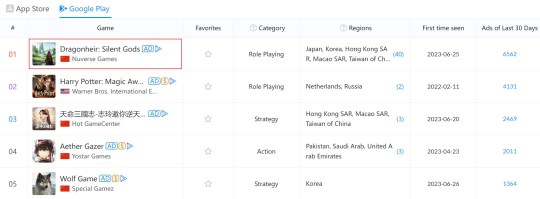
Source: AppGrowing
Dragonheir: Silent Gods is about to be launched in September 2023, according to data.ai. After the release of the global version of Earth: Revival(《星球:重啟》) in February, Dragonheir: Silent Gods will be the second Nuverse game to be available worldwide this year, carrying the company's expectation of building a global brand.
01 An Open-world TRPG on 5-Year Development and $15 M
Dragonheir: Silent Gods is a D&D open-world semi-real-time strategy RPG. It is said to have taken five years to develop and cost over $15 million, making it the most "heavyweight" of the known Nuverse games.
In terms of art, Dragonheir: Silent Gods combines vintage oil painting with the widely accepted dark western fantasy style, differentiating it from the "cartoonish" games of the same genre. Delicate character and scene modeling make the game looks sophisticated.
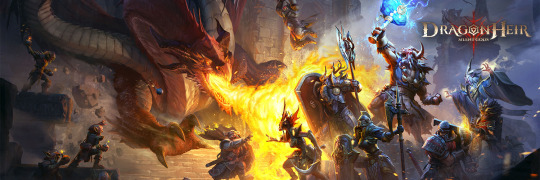
Image Credit: Dragonheir: Silent Gods
Of course, in the case of the increasingly competitive game market, "appearance" alone is not enough to attract players. Officially, the game story text is now approaching 1 million words, and all the dialogue is in English voice-over, including the invited DND series "Critical Role" voice actor Mathew Mercer. Moreover, with the support of high-level music, Dragonheir: Silent Gods tries to revive the D&D-style fantasy world in all aspects.
Along with the vast worldview and plot, the main selling point of Dragonheir: Silent Gods is the "open world adventure" gameplay. Players can freely explore the game world, collect resources, solve challenges, and learn about the characters‘ stories.
Dragonheir: Silent Gods has little innovation in combat. The game adopts a normal turn-based model, incorporating auto chess gameplay to enhance strategy. Players select characters to arrange a team of 5 to fight, and there is a common TRPG "dice throwing" in the process.
Similar to Earth: Revival, Dragonheir: Silent Gods will be released on multiple platforms. According to the official website, the game will not only be available on the mobile platform of App Store and Google Play but also on Steam.
02 Advertising Strategy of Dragonheir: Silent Gods
According to AppGrowing, Dragonheir: Silent Gods began advertising on May 24, which coincides with the opening of the game's PC and Android beta test in Hong Kong, Macau and Taiwan of China.
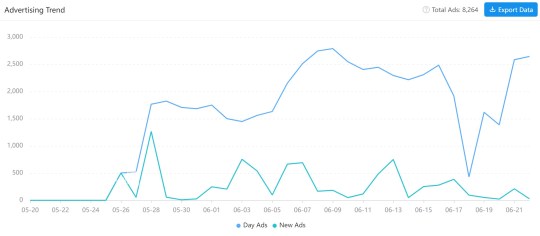
Source: AppGrowing
In terms of media, Dragonheir: Silent Gods mainly invested in Meta Audience Network, Messenger, Instagram, and Facebook, and the share of each is relatively average. Its target markets are in Europe and America. The ad format of the game is mainly in-feed, while creatives are mostly horizontal (including square) videos.
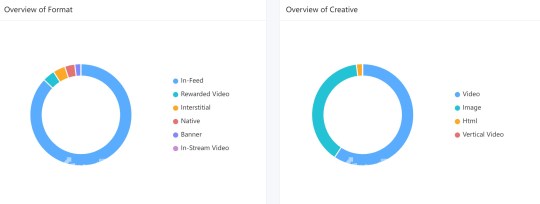
Source: AppGrowing
The creatives of Dragonheir: Silent Gods focus on the content of the game itself and did not go too far, probably because it is still in the early pre-registration advertising stage.
Showing World View & Scenes
DND theme is appealing enough for European and American players. Dragonheir: Silent Gods focuses on the abundant and detailed surroundings in the video, labeling the game as "high quality" and attracting players interested in the genre.
youtube
Some creatives also combine the exploration gameplay. For example, the following video shows the beautiful scenes of several maps through "team exploration".
youtube
Showing Characters
Characters have always been one of the promotional methods for RPG games. Dragonheir: Silent Gods stated that the number of heroes and NPCs in the game has exceeded 200, and the content is also used in ad creatives.
For example, this video shows the character's exquisite modeling at the beginning, and then turns to its combat skills, maximizing the audience's understanding of the character.
youtube
In addition to the direct display of characters, Dragonheir: Silent Gods also released many "character customization" ads. Besides the presets, the game supports a variety of detailed numerical adjustments, with a quality beyond the normal brutal character customization. It even shows the common "property points" of TRPG, highlighting the game's unique features.
youtube
From the advertising point of view, such character customization videos are mostly used for MMO games, which can capture a wide range of players. It may drive Dragonheir: Silent Gods to broaden its target audience.
Showing Strategy Gameplay
Dragonheir: Silent Gods has created ads showing the strategic gameplay. For example, this creative shows the animation effect of characters coming on the battlefield and discharging their skills in turn. Elements such as kill clears and blast damage figures highlight the excitement of the fight and attract users interested in this kind of gameplay.
youtube
Generally speaking, the current creatives of Dragonheir: Silent Gods revolve around the three major directions of game art, characters and gameplay to do simple display, and the entire idea is rather restrained, more to advertise as an auxiliary means of brand exposure. But considering the various ads of Earth: Revival after its launch, perhaps we will see more interesting ad creatives when Dragonheir: Silent Gods is officially released.
03 Will it be "the Year of Game" for Nuverse?
Entering 2023, Nuverse has announced three games, the globally released Earth: Revival, Dragonheir: Silent Gods in pre-registration, and CoA(《晶核》), which is aimed at Mainland China and will be released on July 14. These three are different in art style and gameplay, but all present a high quality. Earth: Revival performed well in Hong Kong, Macao, and Taiwan of China, having taken the Top 2 in Taiwan iOS Top Grossing games. It was launched in Japan in April and once entered the Top 30 of the iOS Top Grossing games. The anime-style ARPG CoA have exceeded 9 million pre-registrations, according to the official website.
From the establishment of the Game Department in 2018, ByteDance has been exploring the game development for the past 5 years. Although there have been news of studio dissolution and project cancellation, Nuverse has done a lot of work, especially in mid core & hard core games, and some of them performed excellently. For example, the female-oriented game Flower Ariel (《花亦山心之月》) and the Earth: Revival that confronted with Tencent and NetEase in the theme of doomsday survival.
The exposure of 3 new games in 2023 H1 reveals a clear increase in Nuverse's game productivity and self-development strength. Whether ByteDance's mid core & hard core games can gain more achievement this year is up to the performance of Dragonheir: Silent Gods and CoA.
*The content and media in this article are protected by copyright laws. Some information is cited from public sources for illustrative purposes only, with ownership retained by the original authors. This article provides general information only and is not meant as opinion or advice for specific situations.
Follow AppGrowing's social media accounts or register immediately at AppGrowing to learn more mobile advertising insights.
LinkedIn: @AppGrowing
Twitter:@AppGrowing
Facebook: @AppGrowing
#mobile games#mobile game marketing#mobilegamedevelopment#digital marketing#bytedance#open world#new game!#Youtube
3 notes
·
View notes
Link
[ad_1] Hong Kong authorities’ recent decision to ban Reversed Front: Bonfire, a Taiwanese-developed mobile game, has generated an unexpected outcome that illustrates both the complexities of digital governance and the enduring power of democratic principles. The game, which allows players to explore various political scenarios including resistance movements, was removed from app stores under Hong Kong’s national security law. However, this action has inadvertently created a powerful case study in how censorship can amplify the very messages it seeks to suppress while highlighting Taiwan’s distinctive position as a thriving democracy in the digital age. Streisand Effect in digital action The ban has produced a textbook example of the Streisand effect—the phenomenon where attempts to suppress information actually increase its visibility and reach. Within hours of the prohibition announcement, Reversed Front: Bonfire became the most searched term on Google among Hong Kong residents. The game’s developers at ESC Taiwan noted with characteristic humor that their product had been “introduced to the entire Hong Kong” through the controversy, reaching far more people than any marketing campaign could have achieved. This unintended amplification extends far beyond Hong Kong’s borders. International media coverage of the ban has drawn global attention to both the game and its underlying themes. Social media discussions about the incident have introduced audiences worldwide to conversations about digital freedom, creative expression and the role of gaming in political discourse. The controversy has transformed a relatively niche mobile game into a symbol that resonates across multiple platforms and jurisdictions. The digital age has fundamentally altered the dynamics of information control. Unlike traditional media, which can be more easily regulated within specific territories, digital content has an inherent viral quality that often makes suppression efforts counterproductive. Each attempt to limit access creates new pathways for distribution and generates additional interest from previously unaware audiences. Divergent governance approaches The incident reflects the natural tensions that arise when different political systems encounter the same digital content. Hong Kong’s application of its national security law represents one approach to digital governance—prioritizing stability and political sensitivity in content regulation. This perspective emphasizes the potential risks that certain digital content might pose to social cohesion and institutional authority. From this governance framework, games that simulate political resistance could be viewed as potentially destabilizing, particularly in regions with complex political circumstances. The swift removal of the game from major app stores demonstrates how regulatory frameworks can be effectively implemented when authorities determine that content conflicts with local legal standards. However, this approach also reveals the inherent challenges of governing digital content in an interconnected world. The rapid international attention generated by the ban illustrates how local regulatory decisions can have far-reaching consequences that extend well beyond their intended scope. Taiwan’s democratic advantage Taiwan’s response to this situation showcases the distinctive strengths of democratic governance in the digital era. Rather than restricting creative expression, Taiwan’s democratic institutions provide space for diverse viewpoints and artistic experimentation. This openness creates an environment where developers can explore complex political themes without fear of censorship, fostering innovation and creativity in digital media. The democratic principle of protected speech, embedded in Taiwan’s political culture, allows for the kind of artistic exploration represented by Reversed Front: Bonfire. This freedom extends beyond mere tolerance to active support for creative industries that tackle challenging subjects. Taiwan’s approach demonstrates how democratic values can serve as a competitive advantage in the global digital economy, attracting creators and innovators who value expressive freedom. Taiwan’s democratic institutions also provide mechanisms for transparent dialogue about digital content and its regulation. Rather than making unilateral decisions about controversial material, democratic processes allow for public debate, stakeholder input and graduated responses that balance various concerns. This approach builds public trust and legitimacy in governance decisions while maintaining space for creative expression. The incident also highlights Taiwan’s role as a proving ground for digital democracy. As technologies evolve and new forms of digital expression emerge, Taiwan’s democratic institutions provide valuable models for how societies can navigate the challenges of governing digital content while preserving fundamental freedoms. Creative implications The global attention generated by the ban creates unexpected economic opportunities for Taiwan’s gaming industry. International curiosity about the controversial game has increased awareness of Taiwanese game development capabilities and the creative environment that enables such projects. This visibility can attract international investment and partnerships while showcasing Taiwan’s technological capabilities. Taiwan’s commitment to creative freedom also positions it strategically in the global digital economy. As companies and creators increasingly value environments that support innovation without excessive restrictions, Taiwan’s democratic approach becomes a significant competitive advantage. This positioning attracts talent and investment while building Taiwan’s reputation as a center for digital creativity. The incident demonstrates how democratic values can translate into economic benefits. By supporting creative industries and protecting expressive freedoms, Taiwan creates conditions that foster innovation and entrepreneurship in digital sectors. This approach generates both economic returns and soft power influence in international markets. Building digital resilience Taiwan’s response to this situation offers lessons for building resilient digital societies. Rather than restricting content reactively, democratic approaches emphasize building robust institutions that can handle controversial material through transparent processes. This institutional strength provides stability and predictability for creators while maintaining public trust. Democratic societies also benefit from diverse perspectives and open debate about digital governance challenges. Rather than avoiding difficult conversations about content regulation, Taiwan’s democratic culture encourages engagement with these complex issues through multiple stakeholders and viewpoints. This approach builds societal resilience and adaptability in the face of evolving digital challenges. The emphasis on democratic processes also creates opportunities for innovative policy solutions. By engaging civil society, industry stakeholders, and academic experts, Taiwan can develop nuanced approaches to digital governance that balance various concerns while preserving core democratic values. Democracy as innovation The Reversed Front: Bonfire controversy ultimately illustrates how democratic principles serve as sources of strength rather than weakness in the digital age. While different political systems will naturally approach digital content regulation differently, Taiwan’s democratic response demonstrates the creative and economic advantages that flow from protecting expressive freedoms. The Streisand Effect generated by the ban serves as a powerful reminder that in our interconnected world, attempts to suppress digital content often achieve the opposite of their intended goals. Taiwan’s embrace of this reality—supporting creative expression while building robust democratic institutions—positions it advantageously in an increasingly digital global economy. Rather than viewing controversial content as a threat to be managed, Taiwan’s democratic approach treats such content as an opportunity for dialogue, innovation, and economic development. This perspective transforms potential challenges into competitive advantages while strengthening democratic institutions and values for future generations. Y Tony Yang is endowed professor and associate dean at George Washington University in Washington, DC, earned his law degree from National Taiwan University and his doctoral degree from Harvard University. [ad_2] Source link
0 notes
Text
Meta's suing an AI app you've probably seen – and wish you hadn't
Meta is now suing the maker of one of the AI “nudify” apps, which, with the growth of generative AI, are now plaguing the internet. The tech giant has filed a lawsuit against Joy Timeline HK Limited, which has developed an app called Crush AI. In the lawsuit, filed in Hong Kong, Meta claims that Crush AI has made several attempts to circumvent Meta’s ad review process and is allegedly continuing…
0 notes
Text
Meet the Youngest CEO in the World Who Beat All Odds?
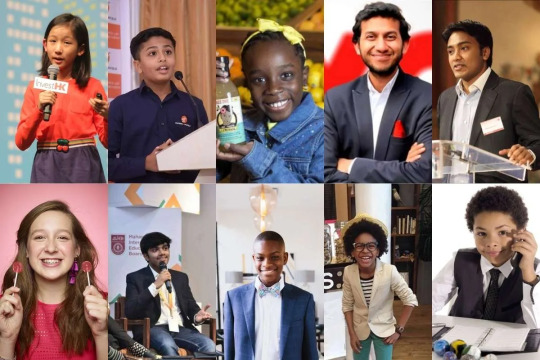
The idea that CEOs must be older and highly experienced no longer holds. A new wave of young leaders is changing how companies grow. They bring energy, creativity, and smart strategies. The youngest CEO in the world is part of this shift, leading teams and shaping industries with a bold vision.
Top 10 Youngest CEOs in the World
Here are ten young CEOs who are leading their businesses with brilliance. Some started as early as 9 or 10 years old. Each story is different, but all are examples of determination, vision, and leadership.
1. Hillary Yip – MinorMynas (Hong Kong)
Source- linkedin.com
Hillary Yip founded MinorMynas when she was just 10. The idea was simple but powerful: a platform where kids could learn languages by talking with other kids. By 15, she was already known worldwide. Today, she promotes global education and encourages young people to learn and connect.
2. Tilak Mehta – Papers N Parcels (India)
Tilak Mehta launched Papers N Parcels at the age of 13, a courier company in Mumbai. He teamed up with the city’s famous dabbawalas to deliver small parcels. His idea turned into a real business that now competes with big courier brands. He is called the youngest CEO in the world in logistics.
3. Mikaila Ulmer – Me & the Bees Lemonade (USA)
Mikaila started selling lemonade at 9 using her great-grandmother’s recipe. She added a twist, helping save bees. Her brand, Me & the Bees Lemonade, is now sold in major stores. A part of the profits goes toward saving honeybee habitats. She proves business can also help the planet.
4. Ritesh Agarwal – OYO Rooms (India)
Ritesh began his journey as a teenager with a dream to fix budget travel. He founded OYO Rooms and became CEO before 20. OYO is now one of the biggest hotel chains in the world. Ritesh showed that youth and ambition can take a local idea global.
5. Suhas Gopinath – Globals Inc. (India)
Suhas built his first website at 14 and started Globals Inc. soon after. By 17, he was officially the youngest CEO in the world at that time. His company provided IT solutions and worked with international brands. He showed that age doesn’t limit technical skills or leadership.
6. Alina Morse – Zolli Candy (USA)
Alina was just 7 when she came up with an idea for a healthy candy that wouldn’t harm teeth. At 9, she founded Zolli Candy, which now sells in over 25,000 stores across the U.S. Her sugar-free candy became a hit, and she became the youngest person to ever pitch at the White House.
7. Advait Thakur – Apex Infosys India (India)
Advait launched Apex Infosys India at 12, an IT and AI company. He developed websites and apps for schools, NGOs, and businesses. His passion for tech and entrepreneurship led to recognition by Google and the United Nations. By 15, he was managing real clients and growing fast.
8. Moziah Bridges – Mo’s Bows (USA)
Moziah Bridges started sewing bow ties at 9. His fashion brand, Mo’s Bows, took off quickly. By 11, he was featured on Shark Tank and gained a mentor. His products were worn by NBA players and sold online. He built a personal brand with class and confidence.
9. Cory Nieves – Mr. Cory’s Cookies (USA)
Cory started selling hot cocoa at 6 to help his mom buy a car. That small idea grew into Mr. Cory’s Cookies, a cookie company known for quality and charm. He became a CEO while still in school. His story shows how passion and purpose can turn into a business.
10. Harli Jordean – Marble King (UK)
Harli started selling marbles at age 6 because he loved playing with them. His online shop, Marble King, grew quickly as orders came from across the UK and the world. By 8, he was managing a successful e-commerce business while inspiring other kids to follow their interests.
Also Read: Famous Business Leaders in History: Icons of Innovation
Business Strategies and Leadership Styles
The youngest CEO in the world doesn’t follow old rules. These leaders move fast, learn quickly, and use digital tools. They talk directly to their teams and listen to feedback. Most focus on innovation and real-world problems. They prefer small teams, flexible work, and clear goals. They lead with purpose, not just profits, and build strong communities around their brands.
Challenges and Future Growth
Being a young CEO is not easy. They face challenges like:
Earning trust from adults
Balancing school and business
Learning legal and financial terms
Also Read:
Selling your Business? These CEO Qualities drive Strong Private Equity Partnerships
The Titans of Industry: Exploring the Qualities of Influential Business Leaders
Leadership Podcast for Entrepreneurs: A Game-Changer for Business Growth
Conclusion
The youngest CEO in the world is not just a title, it’s a powerful message. These kids and teens prove that ideas, courage, and hard work matter more than age. They inspire millions and remind us that leadership starts with action. As more young people start businesses, the future of work and innovation looks exciting. These CEOs lead with heart and hustle, and the world is watching.
FAQs
1. Who is the youngest CEO in the world today?
Hillary Yip is the Youngest CEO. She launched her startup at the age of 10 and officially took the title of CEO in her early teens.
2. What makes someone the youngest CEO in the world?
The title usually goes to a registered company founder who takes the legal role of Chief Executive Officer at the youngest age.
3. Are there other examples besides tech startups?
Yes. The youngest CEO in the world may come from various sectors like education, fashion, food, and logistics.
4. How do young CEOs raise funding?
They often use pitch competitions, social media presence, or angel investor platforms to secure seed money.
5. What skills help young CEOs succeed?
Problem-solving, communication, creativity, resilience, and the ability to learn fast are essential.
6. Can someone become CEO before finishing school?
Yes. Many young CEOs run successful ventures while continuing their education or taking alternative learning paths.
7. Does age limit access to business opportunities?
Not anymore. With online tools and global markets, young entrepreneurs can build and grow companies early.
8. What challenges does the youngest CEO in the world face?
Common challenges include legal barriers, funding gaps, credibility issues, and managing adult teams.
9. How do governments support young CEOs?
Some countries offer startup grants, incubators, or special programs for youth-led businesses.
10. What is the long-term impact of youth-led companies?
They reshape industries, increase digital adoption, and inspire social innovation at scale.
0 notes
Text
Top Android App Development Services in Hong Kong | Spark Tech
Looking for expert Android app development services in Hong Kong? Spark Tech offers top-notch mobile app development solutions for Android, tailored to your specific needs. Contact us for innovative, reliable, and user-friendly Android apps that drive success for your business
For More Information Visit Us:- https://visual.ly/community/Others/technology/top-android-app-development-services-hong-kong-spark-tech
0 notes
Text
Top 10 ICO investment firms in 2025

Investing in Initial Coin Offerings (ICOs) in 2025 is like surfing the digital wave—thrilling, unpredictable, and occasionally, a bit damp. But with the right partners, you can ride the crest without wiping out. Here are the top 10 ICO investment firms making waves this year:
1. Pearl Lemon Crypto
With over 9 years in the digital space, Pearl Lemon Crypto isn't just another crypto firm; it's a seasoned veteran in marketing, lead generation, and web development. Think of them as your personal GPS in the vast crypto universe—guiding you to profitable investments while avoiding the black holes. Whether you're a newbie or a seasoned investor, they've got strategies tailored to your needs. Plus, their approach is as refreshing as a cold drink on a hot day.
2. Robot Ventures
Founded by Robert Leshner, the co-founder of Compound Labs, Robot Ventures is a pre-seed and seed-stage firm focused on crypto and fintech startups. Since 2019, they've backed more than 200 companies and raised $75 million for their fourth fund last year. If you're looking for early-stage investments in the crypto space, Robot Ventures is a firm to watch.
3. AmaZix
Established in Hong Kong in 2013, AmaZix has been a beacon of excellence in token marketing. With a focus on community management, branding, and legal counsel, they've helped raise over $291 million for projects like WePower and Bancor. Their commitment to fostering trust and loyalty has made them an integral part of the blockchain narrative.
4. Blockchain App Factory
Blockchain App Factory has carved a unique niche as a global leader in blockchain development and ICO marketing. Specializing in end-to-end blockchain solutions, they excel in creating custom strategies for token launches, crypto exchanges, and NFT marketplaces. Known for their ability to execute high-impact campaigns, they've empowered numerous projects to achieve visibility and credibility in a highly competitive market.
5. ReVerb
Understanding the power of compelling narratives, ReVerb has helped blockchain startups secure over $30 million in investments. Their expertise lies in crafting stories that resonate with investors, making them a valuable partner for projects looking to make a lasting impression in the ICO space.
6. Blockchain Capital
Founded in 2013, Blockchain Capital is one of the first venture capital funds dedicated to bitcoin and crypto projects. They've invested in several notable category leaders, including Opensea, Kraken, Ethereum, and Coinbase. Their extensive experience and portfolio make them a significant player in the ICO investment landscape.
7. Securitize
Securitize is a financial technology company that provides businesses a platform to raise capital from institutional, accredited, or retail investors with shares issued in the form of digital tokens recorded on the blockchain. As of May 2025, they've issued over $4 billion in assets on-chain, including tokenized funds for BlackRock and Apollo. Their innovative approach to tokenization is reshaping the way capital is raised and managed.
8. Tribe Capital
Tribe Capital is an American venture capital firm that deploys capital in early-stage to late-stage startups, as well as mature companies via venture, growth equity, and loan vehicles. They back startups in software and cryptocurrency both in the United States and internationally. Their data-driven approach and focus on disruptive technologies make them a firm to watch in the ICO space.
9. Insight Partners
Founded in 1995, Insight Partners is a global venture capital and private equity firm that invests in high-growth technology, software, and internet businesses. With approximately $90 billion in assets under management, they have the resources and expertise to support ICO projects looking to scale rapidly.
10. Sequoia Capital
Sequoia Capital is a venture capital firm specializing in seed stage, early stage, and growth stage investments in private companies across technology sectors. As of 2022, the firm had approximately $85 billion in assets under management. Their extensive experience and successful track record make them a formidable player in the ICO investment arena.
Final Thoughts
Navigating the world of ICO investments in 2025 requires more than just a keen eye for emerging technologies; it demands strategic partnerships with firms that understand the nuances of the crypto landscape. Whether you're looking to launch your own ICO or invest in promising projects, these firms offer the expertise and resources to help you succeed. Remember, in the fast-paced world of cryptocurrency, the right guidance can make all the difference. Happy investing!
0 notes
Text
Son Goku - Journey to the West (2020) 청소년 손오공-서쪽으로 여행
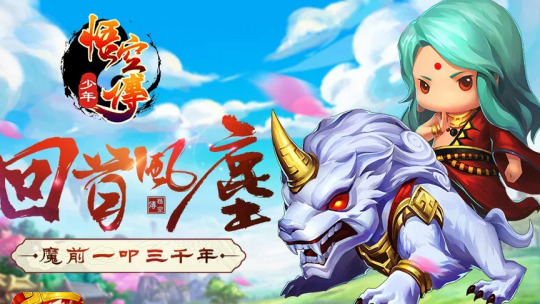

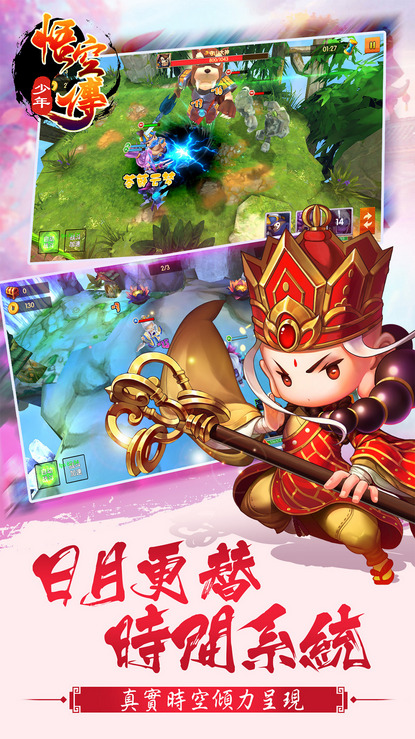
Date: 2020 Platform: Android Developer: MoYe Hong Kong Studio Genre: Role-Playing Type: Reimanging
Summary:
Do you know what happened to the daughter country after the apprentices left? This tells about the Journey to the West that you haven't known yet, letting you integrate into the legendary Journey to the West, and you, as an unexplained young man, seem to have an inextricable relationship with this Journey to the West. Not only the protagonist team such as Sun Wukong, but also Princess Iron Fan and Mrs. Bone, accompanied you to explore the journey to the west. This is an excellent RPG role-playing game, which combines card development and action cultivation, and the game screen is exquisite and cute. The Q version of the 3D cute image is used to interpret the interesting stories. The gameplay is rich but not Redundant, easy to operate and there are tricks everywhere. Do not hesitate to come to the world of Journey to the West, meet three or five friends, and continue to write the legend of Journey to the West. Regardless of whether you like card games or character development, You can be satisfied.
Source: https://play.google.com/store/apps/details?id=com.kpdzsy.xy&hl=en_US
Link: https://play.google.com/store/apps/details?id=com.kpdzsy.xy&hl=en_US
#Son Goku - Journey to the West#청소년 손오공-서쪽으로 여행#jttw media#jttw game#game#video game#reimaging#reimagining#continuation#sun wukong#tang sanzang#demon bull king
9 notes
·
View notes
Text
English to Traditional Chinese Translation – Precision, Culture, and Business-Ready Language Solutions
In today’s competitive global marketplace, accurate and culturally adapted translation is more than just a service—it's a strategic advantage. Whether you’re targeting audiences in Hong Kong, Taiwan, or among Traditional Chinese readers across the globe, professional English to Traditional Chinese translation services ensure your message is not only understood but also well-received.
At Translation Services Singapore, we offer expert English to Traditional Chinese translations that are accurate, localized, and ready for business. Our team of native-speaking translators combines linguistic expertise with cultural fluency to help your content succeed in diverse Traditional Chinese markets.
Why Translate from English to Traditional Chinese?
While Simplified Chinese is commonly used in Mainland China, Traditional Chinese remains the preferred script in Hong Kong, Taiwan, and Macau, and among many overseas Chinese communities. This script style is often associated with formality, prestige, and cultural depth.
Translating your documents into Traditional Chinese is essential when targeting these markets. From corporate documents and legal texts to marketing materials and digital content, the right translation ensures clarity, professionalism, and cultural relevance.
Our English to Traditional Chinese Translation Services Include:
Business Documents: Reports, presentations, proposals, and internal communications
Legal Documents: Contracts, agreements, licenses, terms & conditions
Marketing Materials: Brochures, flyers, newsletters, digital campaigns
Web & App Localization: User interfaces, website content, mobile apps
Technical Manuals: User guides, engineering documents, medical instructions
Certified Translations: Immigration papers, academic transcripts, certificates
Every translation is completed by a native Traditional Chinesespeaker, then reviewed and proofread by an experienced editor to ensure consistency, tone, and accuracy.
Why Choose Translation Services Singapore?
When translating into Traditional Chinese, accuracy is just the beginning. You need a team that understands regional idioms, writing etiquette, and the cultural sensitivities of the audience. That’s where Translation Services Singapore excels.
Here's what sets us apart:
✅ Native Traditional Chinese Translators with subject matter expertise
✅ 100% Human Translation – No machine translation or shortcuts
✅ Contextual Localization tailored to Hong Kong, Taiwan, and overseas Chinese markets
✅ Certified Translations for legal and official documents
✅ Confidential & Secure Handling of all documents
✅ Fast Turnaround Times with high accuracy and reliability
We serve a wide range of industries including finance, law, healthcare, education, e-commerce, and government.
Who Can Benefit from English to Traditional Chinese Translation?
Our services are ideal for:
Multinational Companies entering Hong Kong or Taiwanese markets
Startups & SMEs localizing content for Traditional Chinese users
Law Firms needing bilingual contracts and official documentation
Educational Institutions issuing credentials or promotional materials
Tourism Agencies appealing to Chinese-speaking travelers
App Developers & SaaS Companies enhancing user accessibility
By ensuring your message is accurately translated into Traditional Chinese, you demonstrate respect, professionalism, and commitment to quality—qualities that build trust in any market.
Cultural Fluency Makes the Difference
Translating into Traditional Chinese isn't just about converting text—it's about conveying meaning, intent, and tone in a way that resonates with readers. For example, Traditional Chinese writing often employs more formal or poetic structures compared to Simplified Chinese. Our translators know how to strike the right balance between authenticity and clarity, ensuring your message retains its impact.
This cultural fluency is especially important in legal, financial, and marketing content, where one word can change the tone or interpretation significantly. With our team, your translation is always culturally sensitive, accurate, and effective.
Get Started Today with Trusted English to Traditional Chinese Translators
No matter the size or complexity of your project, our team is ready to help you communicate clearly and confidently in Traditional Chinese. Upload your document today for a free quote, and our project managers will guide you from start to finish—ensuring quality and timeliness at every step.
Bridge the Language Gap with Professional Chinese Translation
At Translation Services Singapore, we help you break language barriers and open new doors. Our English to Traditional Chinese translation services are tailored to support your business growth, legal compliance, and global communication strategies.
#English to Traditional Chinese Translation – Precision#Culture#and Business-Ready Language Solutions
0 notes
Text
Mobility as a Service Market Size, Analyzing Trends and Projected Outlook for 2025-2032

Fortune Business Insights released the Global Mobility as a Service Market Trends Study, a comprehensive analysis of the market that spans more than 150+ pages and describes the product and industry scope as well as the market prognosis and status for 2025-2032. The marketization process is being accelerated by the market study's segmentation by important regions. The market is currently expanding its reach.
The Mobility as a Service Market is experiencing robust growth driven by the expanding globally. The Mobility as a Service Market is poised for substantial growth as manufacturers across various industries embrace automation to enhance productivity, quality, and agility in their production processes. Mobility as a Service Market leverage robotics, machine vision, and advanced control technologies to streamline assembly tasks, reduce labor costs, and minimize errors. With increasing demand for customized products, shorter product lifecycles, and labor shortages, there is a growing need for flexible and scalable automation solutions. As technology advances and automation becomes more accessible, the adoption of automated assembly systems is expected to accelerate, driving market growth and innovation in manufacturing. The global mobility as a service (MaaS) market was $182.12 billion in 2018 and is expected to reach $210.44 billion by 2026, with a CAGR of 1.9% during the year. forecast period from 2019 to 2026.
Get Sample PDF Report: https://www.fortunebusinessinsights.com/enquiry/request-sample-pdf/102066
Dominating Region:
North America
Fastest-Growing Region:
Asia-Pacific
Major Mobility as a Service Market Manufacturers covered in the market report include:
Uber
Lyft, Inc
Didi Chuxing
Grab
Ola
Gett
Micro-mobility is expected to be the future of shared transportation, especially in developing countries. Micro-mobility is the use of light vehicles such as bikes and scooters on a shorter distance. For example, in the United States, motorbike and bicycle account for a significant share in the short distance traveling (under 5 miles). The growing inclination of consumers towards micro-mobility has drawn the attention of big players such as Daimler and BMW in micro-mobility transportation. This mobility as a service company has scooters on rent in 6 cities in Europe. Uber is also making plans to include rented bikes and scooters in their app by establishing partnerships with Getaround and Lime. Uber has also acquired JUMP that offers electric scooters and bikes on rent for the short-term. Increasing the use of micro-mobility is, in turn, saving time and money for consumers compared to the regular taxi rides.
Geographically, the detailed analysis of consumption, revenue, market share, and growth rate of the following regions:
The Middle East and Africa (South Africa, Saudi Arabia, UAE, Israel, Egypt, etc.)
North America (United States, Mexico & Canada)
South America (Brazil, Venezuela, Argentina, Ecuador, Peru, Colombia, etc.)
Europe (Turkey, Spain, Turkey, Netherlands Denmark, Belgium, Switzerland, Germany, Russia UK, Italy, France, etc.)
Asia-Pacific (Taiwan, Hong Kong, Singapore, Vietnam, China, Malaysia, Japan, Philippines, Korea, Thailand, India, Indonesia, and Australia).
Mobility as a Service Market Research Objectives:
- Focuses on the key manufacturers, to define, pronounce and examine the value, sales volume, market share, market competition landscape, SWOT analysis, and development plans in the next few years.
- To share comprehensive information about the key factors influencing the growth of the market (opportunities, drivers, growth potential, industry-specific challenges and risks).
- To analyze the with respect to individual future prospects, growth trends and their involvement to the total market.
- To analyze reasonable developments such as agreements, expansions new product launches, and acquisitions in the market.
- To deliberately profile the key players and systematically examine their growth strategies.
Frequently Asked Questions (FAQs):
► What is the current market scenario?
► What was the historical demand scenario, and forecast outlook from 2025 to 2032?
► What are the key market dynamics influencing growth in the Global Mobility as a Service Market?
► Who are the prominent players in the Global Mobility as a Service Market?
► What is the consumer perspective in the Global Mobility as a Service Market?
► What are the key demand-side and supply-side trends in the Global Mobility as a Service Market?
► What are the largest and the fastest-growing geographies?
► Which segment dominated and which segment is expected to grow fastest?
► What was the COVID-19 impact on the Global Mobility as a Service Market?
FIVE FORCES & PESTLE ANALYSIS:
In order to better understand market conditions five forces analysis is conducted that includes the Bargaining power of buyers, Bargaining power of suppliers, Threat of new entrants, Threat of substitutes, and Threat of rivalry.
Political (Political policy and stability as well as trade, fiscal, and taxation policies)
Economical (Interest rates, employment or unemployment rates, raw material costs, and foreign exchange rates)
Social (Changing family demographics, education levels, cultural trends, attitude changes, and changes in lifestyles)
Technological (Changes in digital or mobile technology, automation, research, and development)
Legal (Employment legislation, consumer law, health, and safety, international as well as trade regulation and restrictions)
Environmental (Climate, recycling procedures, carbon footprint, waste disposal, and sustainability)
Points Covered in Table of Content of Global Mobility as a Service Market:
Chapter 01 - Mobility as a Service Market for Automotive Executive Summary
Chapter 02 - Market Overview
Chapter 03 - Key Success Factors
Chapter 04 - Global Mobility as a Service Market - Pricing Analysis
Chapter 05 - Global Mobility as a Service Market Background or History
Chapter 06 - Global Mobility as a Service Market Segmentation (e.g. Type, Application)
Chapter 07 - Key and Emerging Countries Analysis Worldwide Mobility as a Service Market.
Chapter 08 - Global Mobility as a Service Market Structure & worth Analysis
Chapter 09 - Global Mobility as a Service Market Competitive Analysis & Challenges
Chapter 10 - Assumptions and Acronyms
Chapter 11 - Mobility as a Service Market Research Methodology
About Us:
Fortune Business Insights™ delivers accurate data and innovative corporate analysis, helping organizations of all sizes make appropriate decisions. We tailor novel solutions for our clients, assisting them to address various challenges distinct to their businesses. Our aim is to empower them with holistic market intelligence, providing a granular overview of the market they are operating in.
Contact Us:
Fortune Business Insights™ Pvt. Ltd.
US:+18339092966
UK: +448085020280
APAC: +91 744 740 1245
0 notes